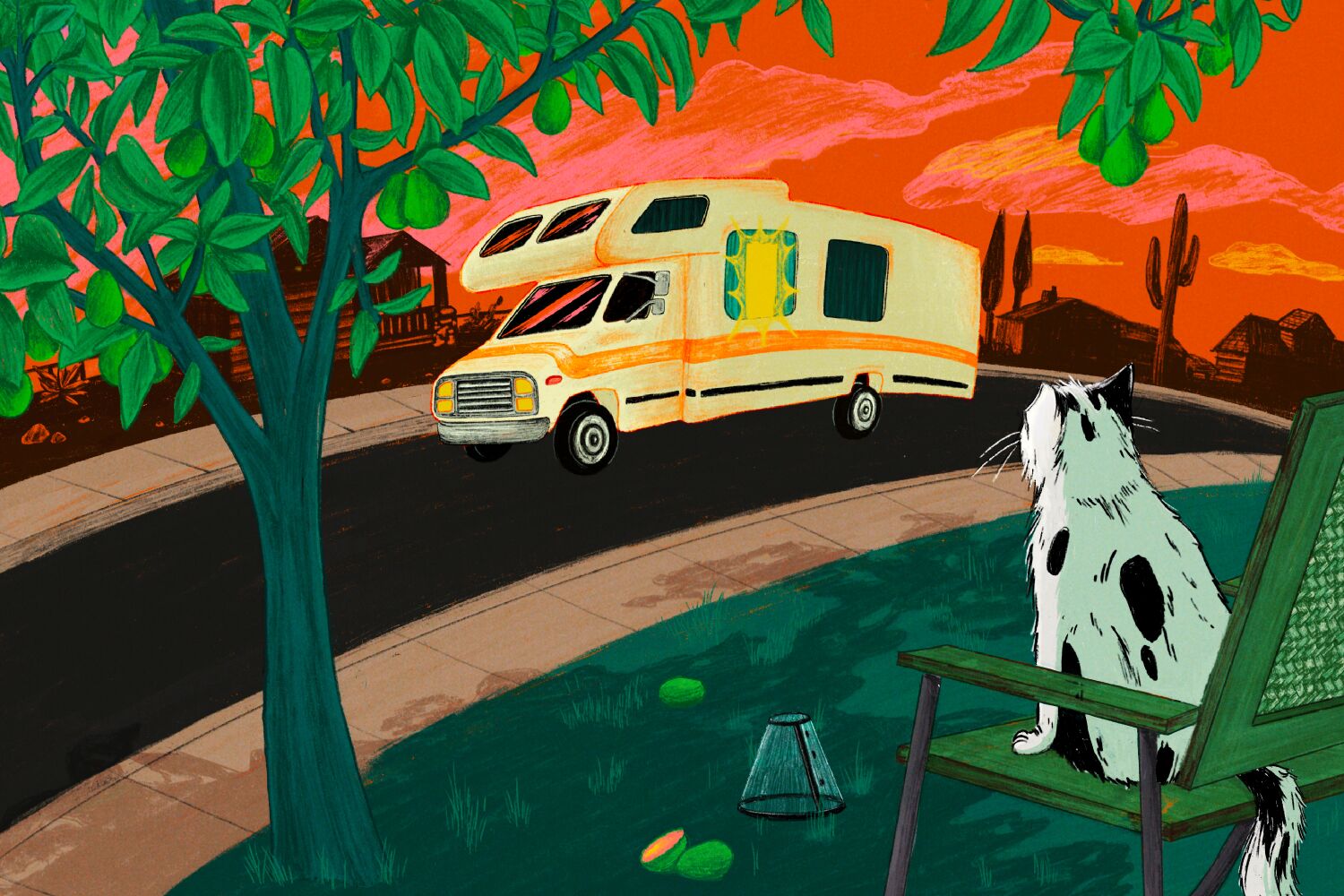
Buster, the cat who is and isn’t mine, lost his ear. The man who raised Buster lost his house. And I lost a tooth.
I keep a tally of what happens in my neighborhood of changes.
The lost house — around the corner from me, once the man’s family home, put on the market by his siblings — sold in no time. Of course it did. It was affordable by L.A. standards, in up-and-coming, river-adjacent Frogtown.
Proceeds from the sale were divvied up, and the man opened a bank account for the first time ever. He was able to buy a beat-up car and an old RV. The RV is tidy and has curtains. It looks more like a preserved family vacation vehicle from the 1980s than shelter for the otherwise unhoused in 2023. He parks it on the street right next to the house he grew up in and lived in until a few months ago, only moving it to the other side for street cleaning.
The man has friends, people who are looking out for him. They may not be able to house him (he has lived alone for so long he might prefer independence), but he has places to shower and do laundry without judgment. He has redeemed himself from whatever he got up to in the past (there are some wild stories), and one of the old-timers calls him a good soul. He must be. He feeds the ducks by the river, and he bottle-fed orphaned Buster when the cat was a kitten.
Buster, who now belongs to no one, has claimed a lawn chair parked under my guava tree. He developed a festering bloody lesion on his left ear — his white ear. White cats — and mostly white cats like Buster — that spend a lot of time outdoors are prone to skin cancer, just like white people.
I took Buster to the vet and he got scheduled for a pinnectomy (removal of his ear). I was advised to make sure he wore a cone and stayed indoors for the following two weeks, but I knew that was not possible. Buster was coneless in about five minutes but he spent a couple of post-op days inside my house, where he was miserable.
So I let him out, trusting his cat judgment to know what was best. He went back to his old independent routine, albeit with some crusty stitches where his ear used to be. He could still get his medicine — antibiotics — when either the man or I fed him.
A fortnight later, I took Buster back to the vet to have his stitches removed. The instructions were the same — cone and indoors for the next two weeks. Yeah, yeah, yeah… I opened the door to the carrier while it was still on the backseat and let him hop out when we got back to Frogtown. After about an hour of sulking somewhere, he was in his chair under the tree.
The man tells me what it was like growing up here. As a kid, he used to be able to get to Elysian Park by a footbridge that crossed the 5 Freeway. The bridge was damaged by a mudslide and taken down. Which, he says, was just as well from his parents’ point of view. A 9-year-old boy from the neighborhood found two victims of the Hillside Stranglers in the park in 1977.
The man is aware of his own vulnerability. He sleeps with one eye open, still able to hear the familiar sounds of the neighborhood chickens, the church bells, the trains from across the river. He knows he could be prey to criminals or do-gooders, bureaucrats or unhappy neighbors who one way or another could take what little he has. He makes me think about survival in a way I never have before.
The biggest threat might come from those whose “respectable” existence has influence. I’ve heard that some of the latest arrivals in our enclave have complained about the RV parked on the street. I guess if you’ve paid $1.5M for a property you don’t want to be in close proximity to a grizzled man in a home with wheels. Maybe they should try to get to know its inhabitant instead of complaining.
Once, pointing to the glove compartment in his car, the man told me he had an exit strategy. I was not surprised. I get it. It makes sense if you’re cornered by disease or poverty.
But for now, the cat, the man and the changes here are relatively stable. Every new day is greeted with caution.
Oh, about my tooth. It was time for a 30-year-old crown and root canal to be replaced with an implant. Like everything else, my missing-tooth smile is only temporary.
Nancy Glowinski is a former global head of photography for Reuters.

